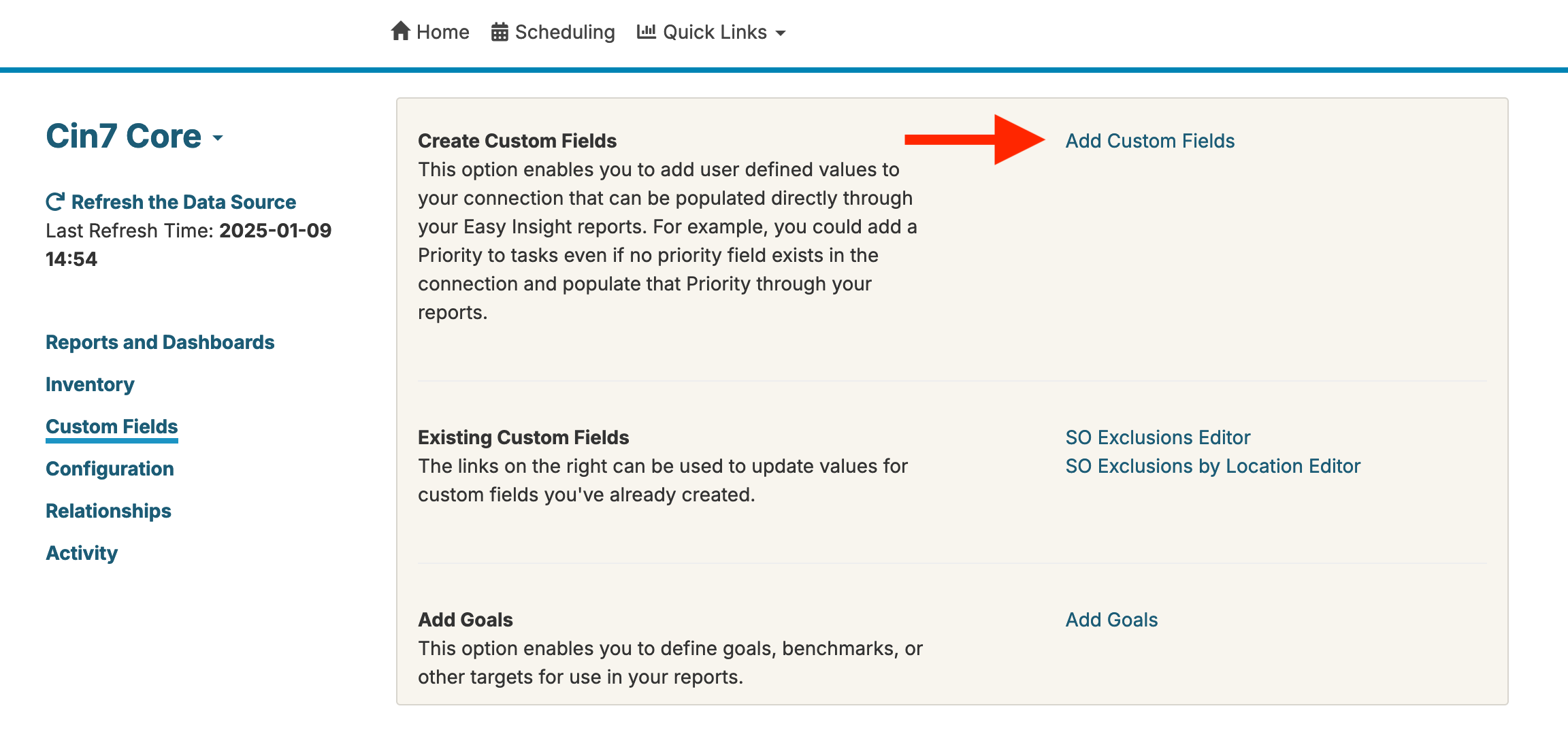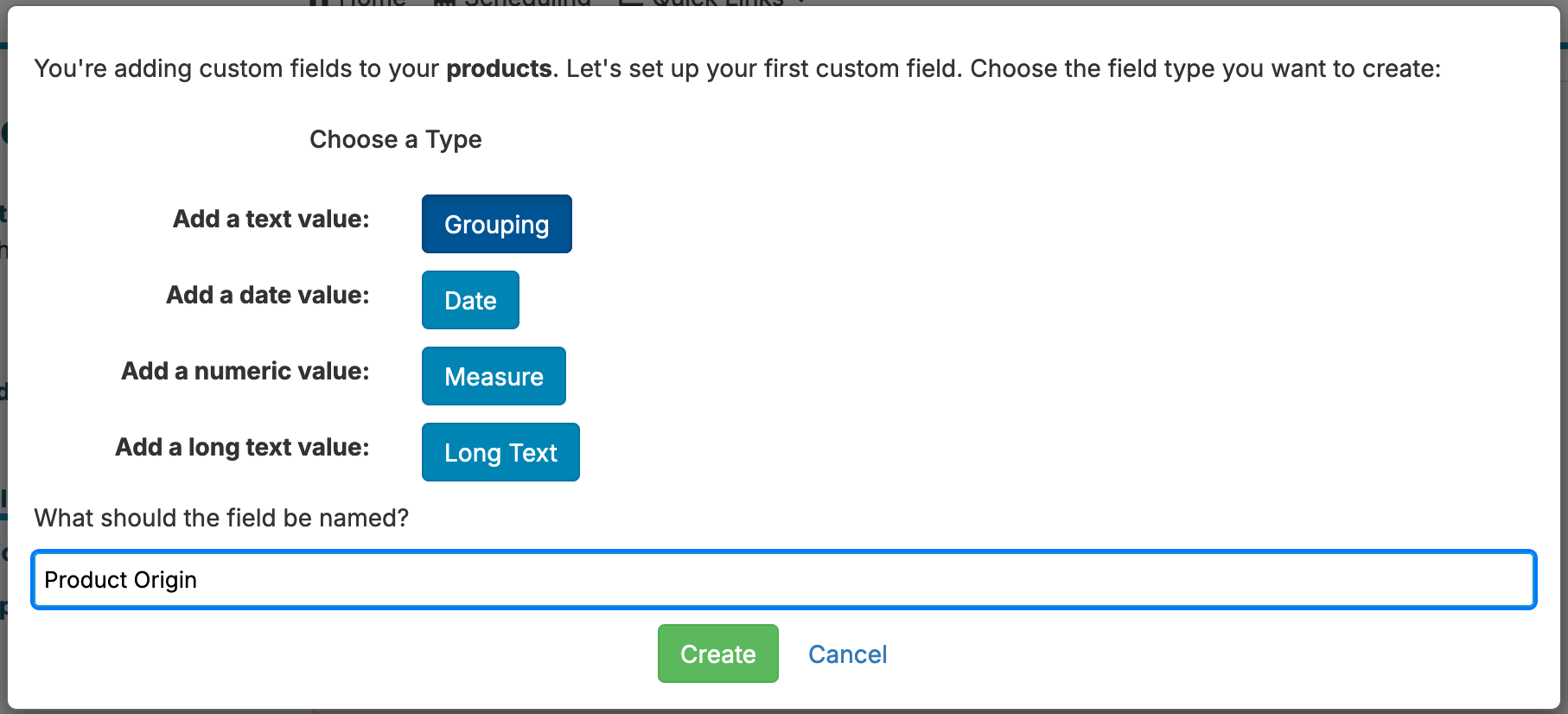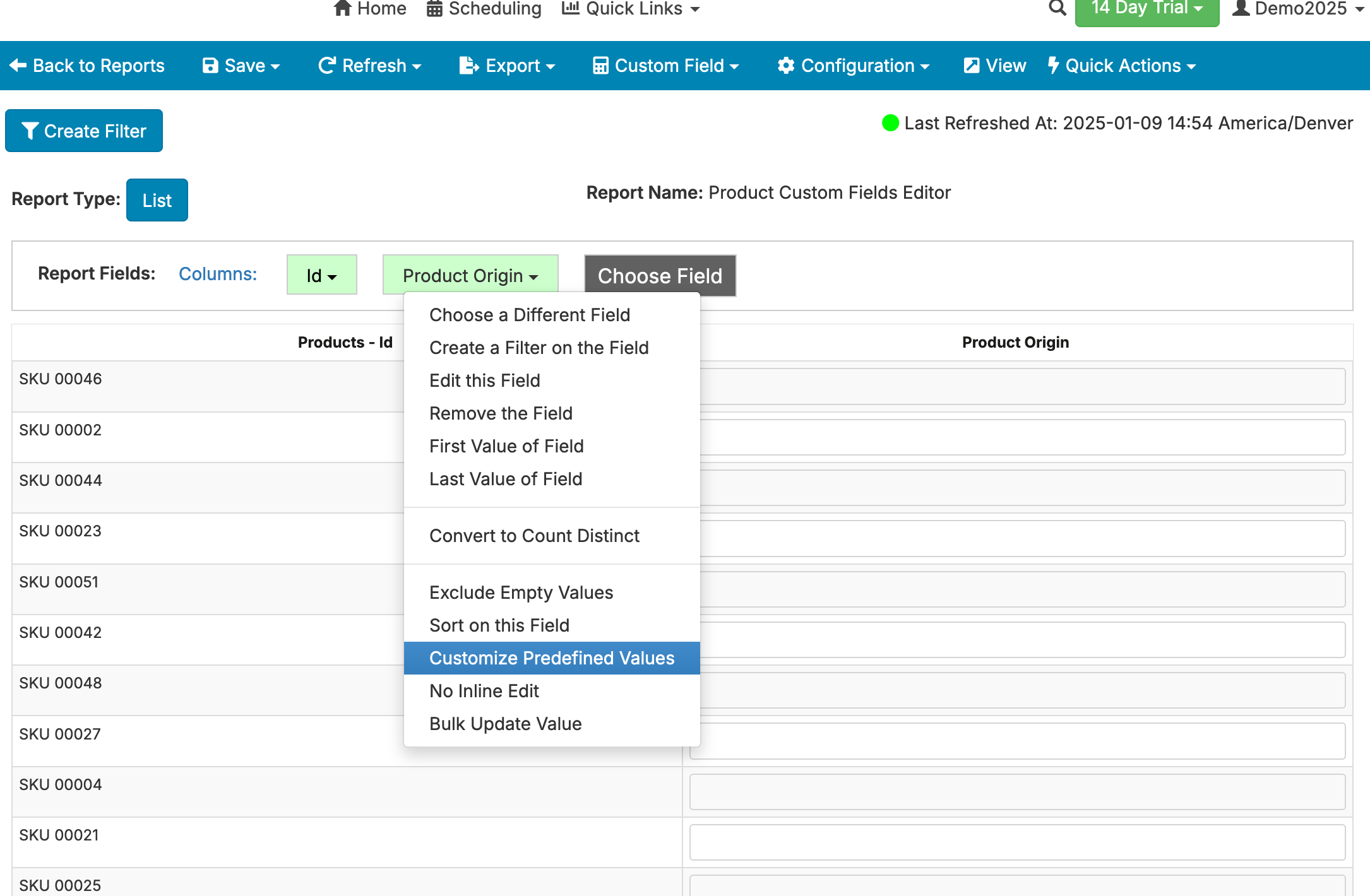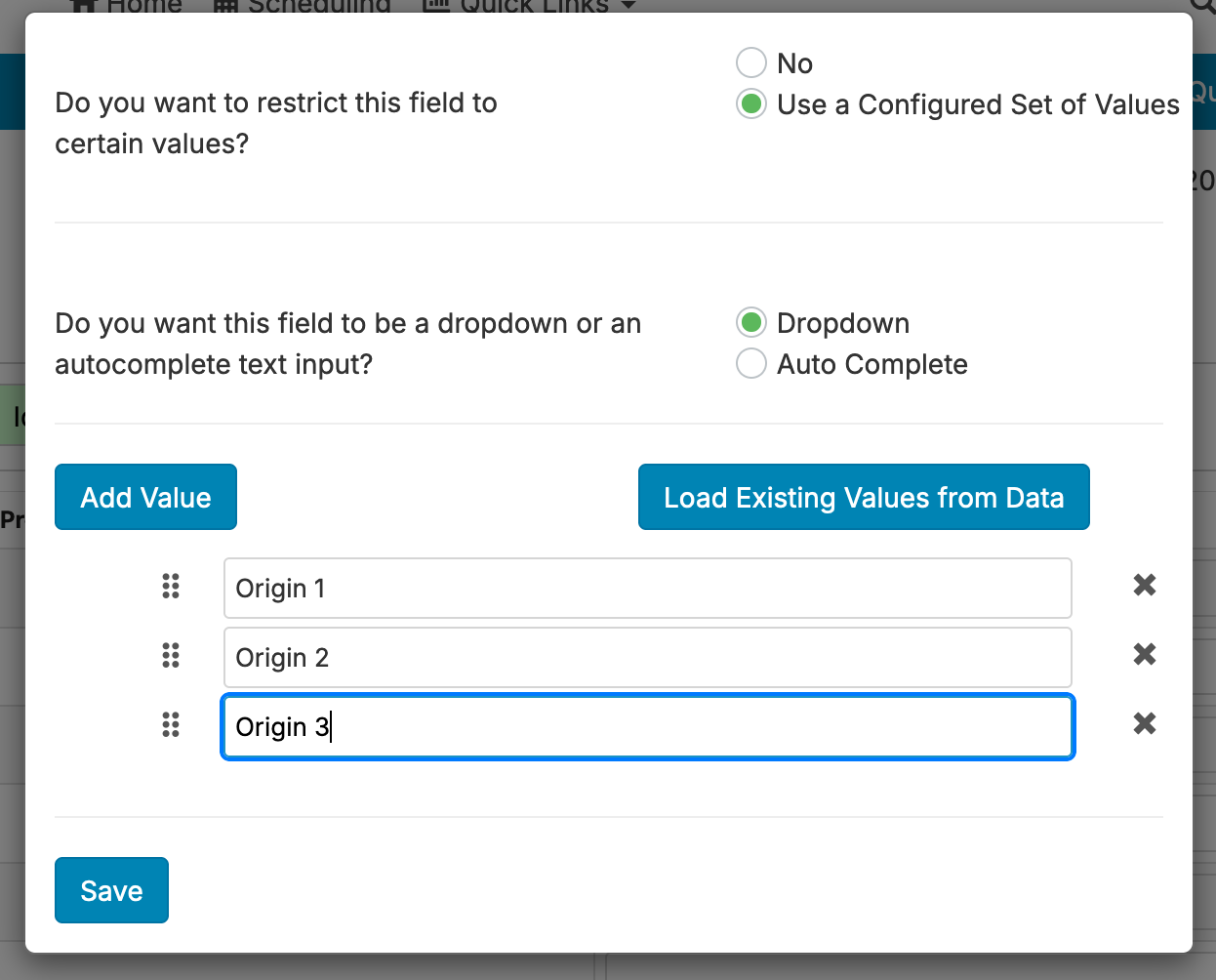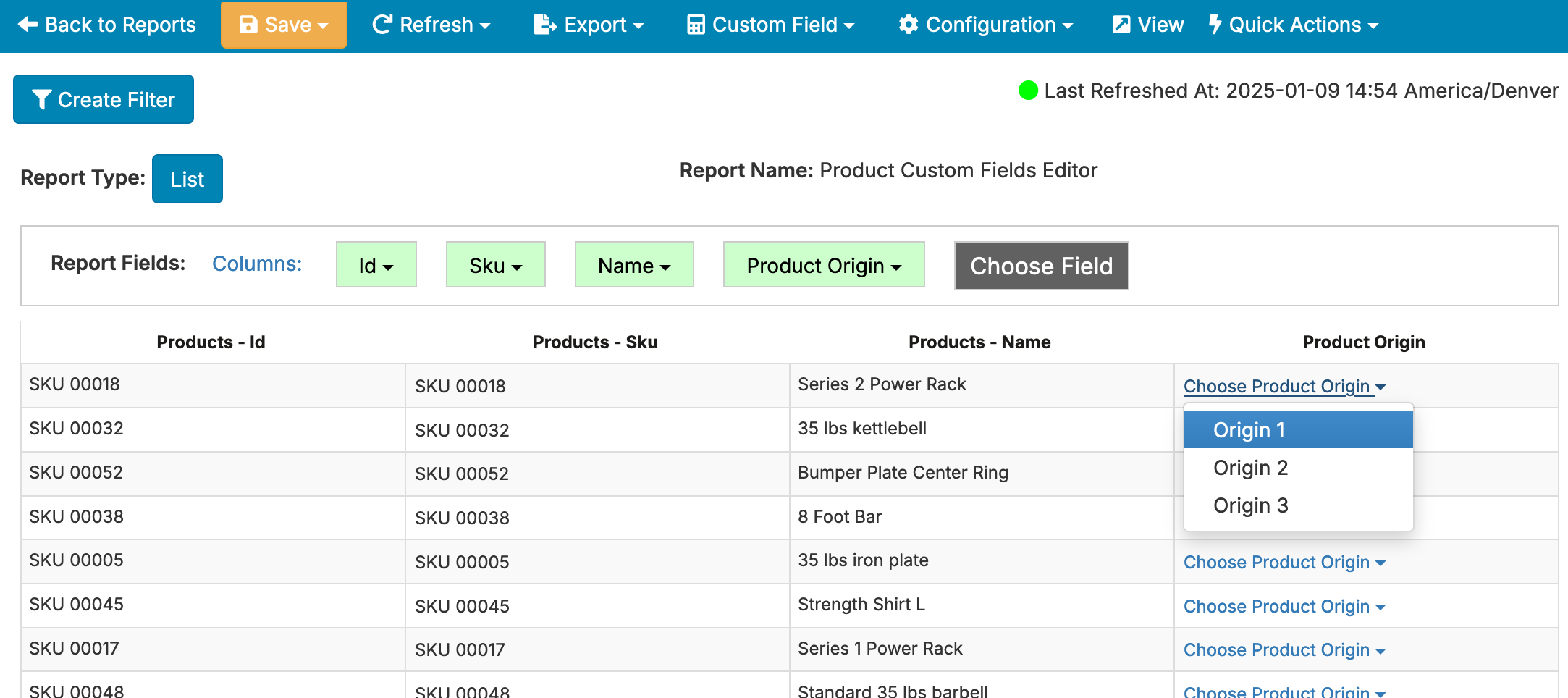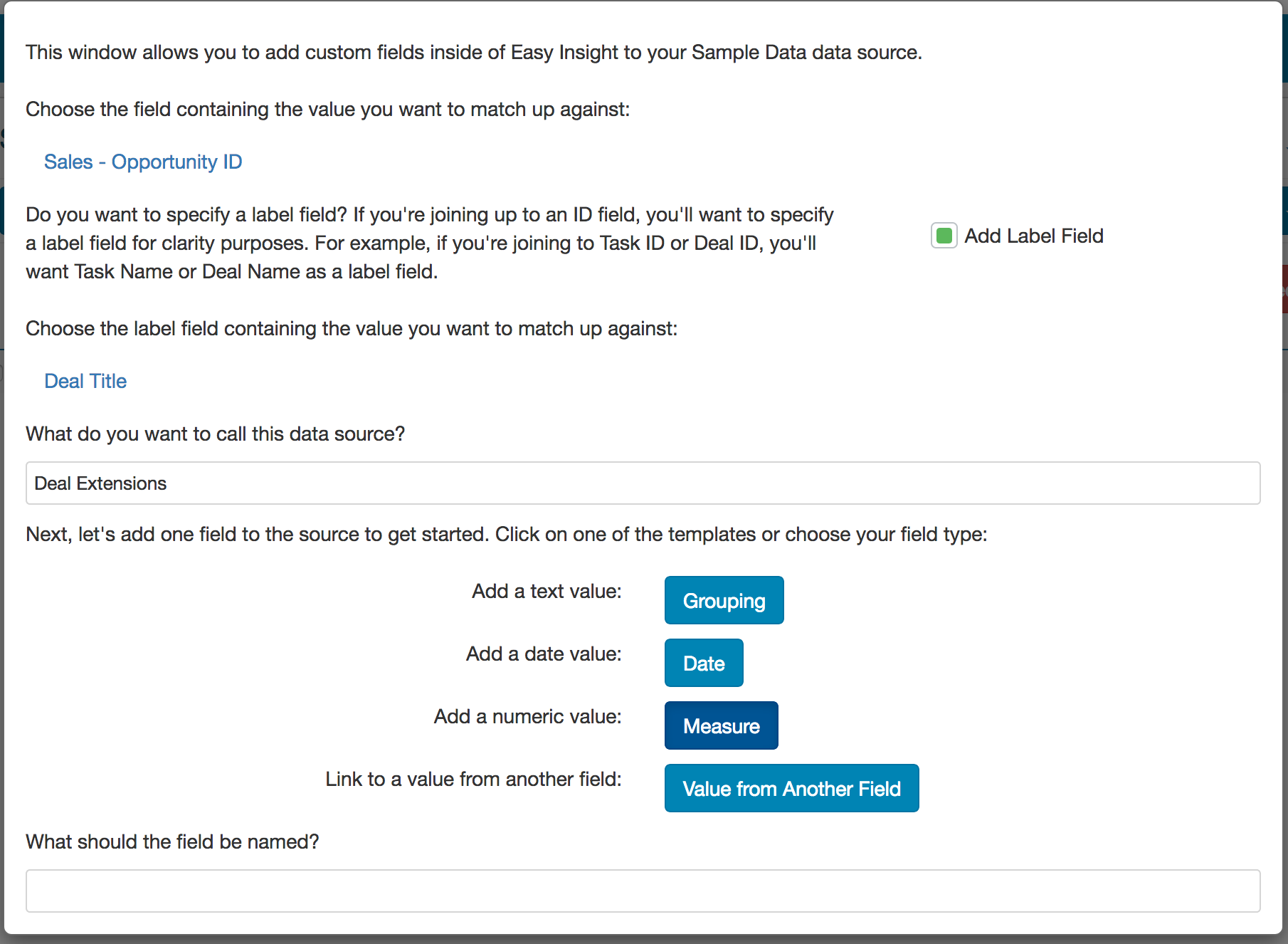You can choose whether or not to include a label field as part of the configuration. For our above example, we're using Opportunity ID, but we also want to include Deal Title so that when we're assigning values, we know which deal we're mapping the data into. We'll need to choose a name for the custom field data source, choose a type for the field, and name the field. In the above example, we're labeling the data source as Deal Extensions and choosing a Measure as the type. Once generated, the field is editable in exactly the same way as the Basecamp example.


